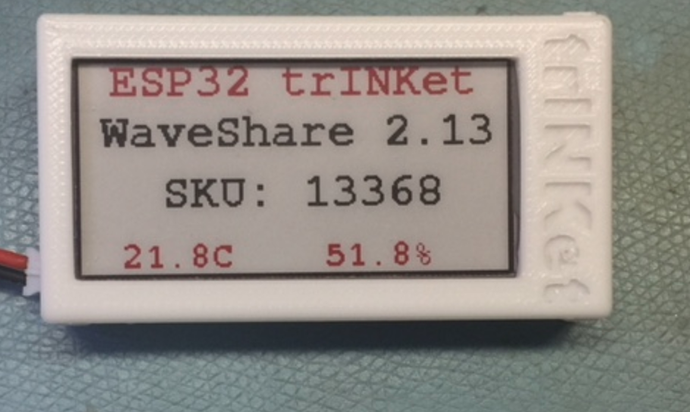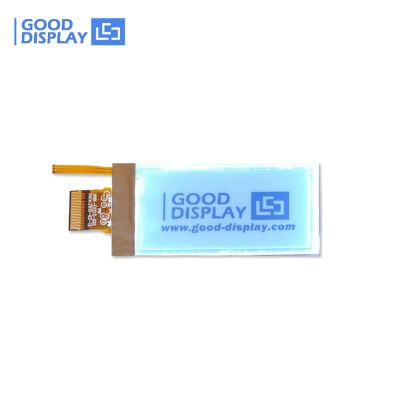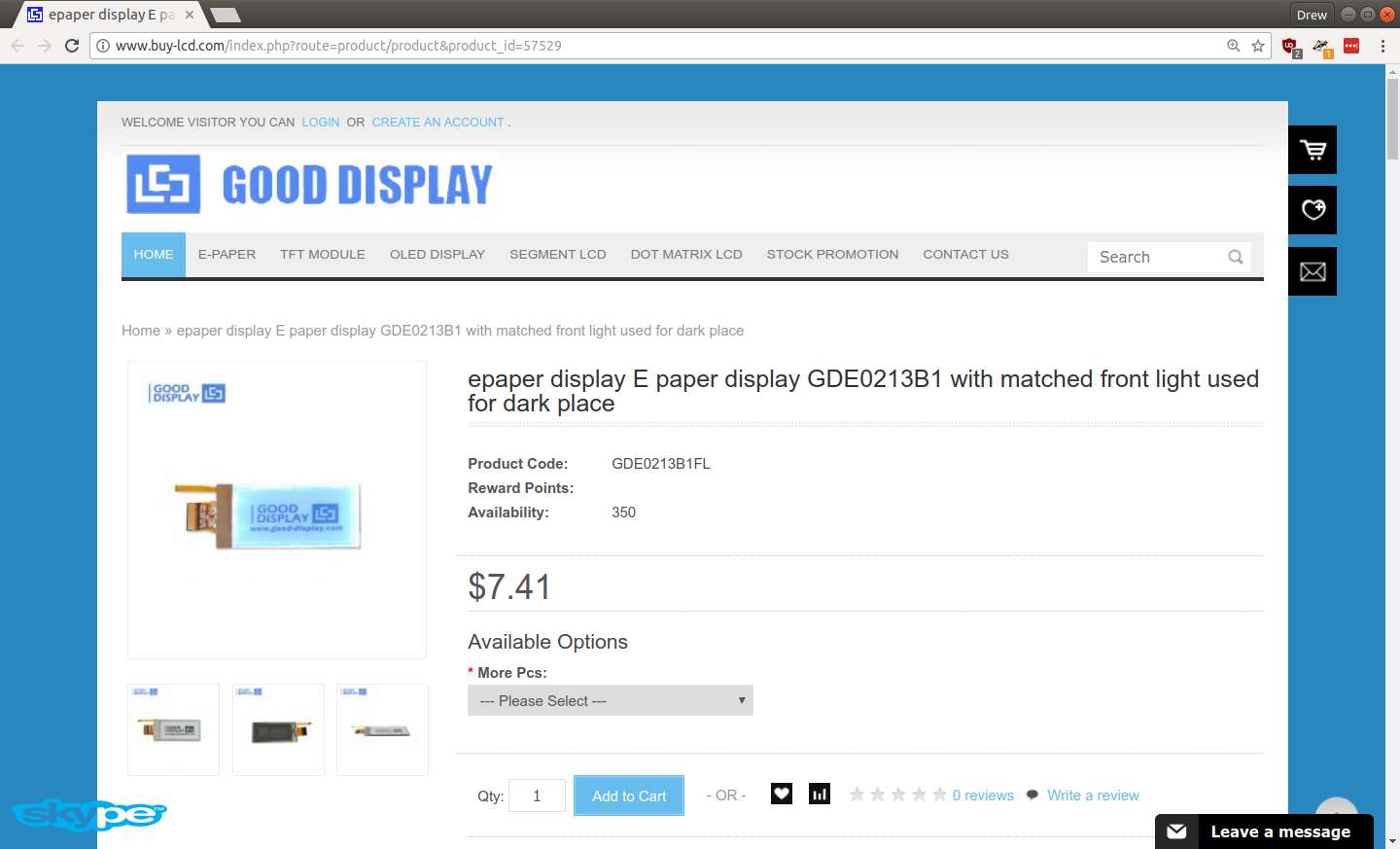-
Current project status
05/29/2018 at 17:35 • 2 comments1) I want to have assembly done by Sept. 1st
2) I met people from Rigado and they gave me a dev board. This is the module used in the Portland Bsides Oregon Trail badge and previous And!XOR bender badge. It is a module board for Nordic Bluetooth SoC. I am waiting on a quote from them for qty 300.
3) BLE on ESP32 is not low power, yet, and has same power draw as WiFi
4) I hung out with And!XOR this past weekend and saw the new Bender badge. They are using ESP32. They prefer the development environment as compared to Nordic (for the Rigado module). The BLE stack is much more basic than Nordic but they also have the option to leverage WiFi. They are using 2xAA with a Skyworks boost converter
5) Please @ mention @oshpark in this project's hack chat to make sure I'll see it.Thanks!
Drew Fustini
-
Enclosure design?
05/29/2018 at 17:03 • 4 commentsNemesis raised an interesting question in this post about OHS 2018 on the OSHWA Forum:
http://community.oshwa.org/t/open-hardware-summit-2018-mit-september-27th/183/4
I checked the badge's reference project on Github. I attached an image below for people to get an idea of what the reference looks like. Will the enclosure for the badge be 3D printed as well?
From the ESP trINKet repo:
![]()
Here are my (Drew Fustini) thoughts:
- I had not planned on having an enclosure but I would be open to the idea.
- I want the final board design to have an interesting shape (board outline). I am not very good at mechanical design so I had not considered designing an enclosure. However, it would be awesome if someone was interested in designing one.
- First I think we need to figure out the aesthetic for the PCB, both in terms of outline and artwork (silk and/or copper).
- The manufacture of 300 enclosure would also have to be figured out. and if laser cutting or 3d printing is the best approach.
- Alternatively, I suppose it would be cool if we had the enclosure design in the GitHub repo for people to fabricate themselves if they wanted.
I would appreciate any feedback in the comments here.
Thanks!
Drew Fustini
-
Display option: e-paper with backlight
05/14/2018 at 17:02 • 6 comments![]()
I recently came across this interesting low cost e-paper which features a backlight:
epaper display E paper display GDE0213B1 with matched front light used for dark place
www.buy-lcd.com/index.php?route=product/product&product_id=57529
It does seem that backlight might be useful as the Open Hardware Summit will be indoors.
I may order one of these displays to see how difficult it is to interface. The advantage of Waveshare is that there is already a working library with the ESP trINKet design.
![]()
-
Decision: ESP32 based design
05/07/2018 at 17:52 • 0 commentsI have been evaluating several hardware options for the OHS18 badge and discussing in this project's hackachat. I have arrived at the decision that the ESP32 is the best choice for the OHS18 badge given the desired features and the budget.
Evaluated options:
SiFive is very promising but I think their current microcontroller chip, the FE310, is a bit limited in peripherals and RAM, and as of now, it lacks a serial bootloader. I do believe they will release more capable microcontroller chips in the future, and I look forward to designing a new badge when they are available.
I really like the FPGA workshop badge for Hackaday Belgrade:
https://github.com/mmicko/workshop_badge
I am intrigued by the idea of a "soft" RISC-V microcontroller running in a FPGA. The added benefit is that the Lattice ice40 FGPA has an open source tool chain and the RISC-V core can even run MicroPython:
https://twitter.com/fpga_dave/status/987646147060813825
However, it does seem that it would be difficult for this design to work given the budget of $25 per badge. I would definitely like to revisit this concept in the future.
Chosen design:
The current concept is based on the ESP trINKet by Mike Rankin:
https://github.com/mike-rankin/ESP_trINKetFeatures for the OHS18 badge:
- ESP32 microcontroller with built-in WiFi and BLE
- E-Paper to display the badge wearer's name
- Use Bluetooth Low Energy (BLE) to allow badge wearer to update the displayed text from an Android or iOS phone
- Powered by 2x AAA batteriesBudget:
$25 per badge. Quantity 300 badges.
This cost will have to include components, batteries, PCB, assembly, lanyard, packaging.
Production plan:
The goal is to produce quantity 300 badges by September 1st. The badge circuit boards will be pick-n-place assembled by a professional assembly service. A test jig will need to be created for the assembler to test the badges.
Hardware tasks:
- reproduce the ESP trINKet design in KiCad (Mike Rankin's design was done in Altium)
- modify the ESP trINKet design to use 3x AAA for power instead of LiPo- design test jig to program and test the badge
Design tasks:
- create an atheistic design for the badge including artwork and shape
Software/Firmware tasks:
- proof of concept demo on ESP32 using BLE to set the text on the e-paper display- develop simple method for the wearer to enable and disable BLE advertise mode _(this should prevent others from "taking control" of one's badge)_
- stretch goal: load image onto the e-paper display via BLE
- stretch goal: badges interact with each other using BLE
- develop test procedure for jig to send to assembler
Production/Supply Chain tasks:
- decide on which e-paper display to use (current choice is Waveshare 2.13" display)- create BoM for all parts and check lead times with distributors
- create a plan for provisioning the badges and how the badge wearer will connect to their badge over BLE
- talk with assembly company to figure out best way to assembly badge with epaper display (use connector or directly solder the ribbon cable)What tasks am I missing?
Thanks for your consideration!
Drew Fustini
<drew@oshpark.com> -
Discussion: e-paper display options
04/05/2018 at 16:02 • 0 commentsLast year, I made a badge using a 2.13" Pervasive e-paper display:
https://github.com/pdp7/kicad-teensy-epaper
It originally used code from Jarek Lupisinki for a Freescale microcontroller (the Teensy) and later Zach Archer wrote the wonderful FancyEPD library which can do faster updates and even 4-bit greyscale!
https://github.com/zkarcher/FancyEPD
However, I grew disappointed with Pervasive as the display I used was out of stock for over 6 months on Digi-Key (their only distributor). I know they have some new models now, but in the meantime, I tried out Crystal Fontz, BuyDisplay.com and Waveshare. Waveshare is currently my preference as their displays are about half the cost and I have had no trouble ordering direct from Waveshare in China.
Mike Rankin has done a great project called the ESP trINKet using the ESP32 and Waveshare e-paper:
https://github.com/mike-rankin/ESP_trINKet -
Discussion: battery power options
04/05/2018 at 04:28 • 10 commentsI forgot to write in the project overview about how the badge should be powered.
In my own projects, including my Teensy E-Paper badge, I always use small LiPo batteries. However, we (OSH Park) want to avoid Li-ion or LiPo batteries for the Open Hardware Summit 2018 badge. This position is due to the logistical restrictions with shipping such batteries, and also the potential risk (no matter how small) to the person wearing the badge.
Therefore, I believe the best choice will be to use Alkaline AAA cells. My goal would be to use just 1 AAA battery to minimize weight (as it hangs on your neck). However, if that has insufficient capacity, then the design could move to 2 AAA batteries.
I believe the best source for AAA batteries will be AmazonBasics 100 pack:
https://www.amazon.com/AmazonBasics-Performance-Alkaline-Batteries-100-Pack/dp/B01B8R6V2E?th=1
I have heard from @Benchoff that AA/AAA battery holders are alwaysl be more expensive than the actual batteries. I need to research potential suppliers and pricing.
-Drew
-
Discussion: FPGA feasible?
04/05/2018 at 03:57 • 6 commentsI received these interesting thoughts from a hackerspace acquaintance which make me wonder if it would be feasible for the $25/badge budget to use an FPGA that would run an open source "soft-core".
This person thought that the RISC-V badge is a great starting point (see earlier project log). The connector between the badge and the processor could be useful for reuse and upgrades. However, the connector that was chose is not the most common or easiest to work with.
The Parallax Propeller is an open source microcontroller that is available in a DIP form factor. It would be nice to provide people with options and the DIP form factor is very convenient. There are several existing boards that fit that DIP form factor:It might useful to create some RISC-V modules in the same form factor. Potentially, one version could have the FE310, and one with a soft RISC-V running in an FPGA.
Propeller pinout for the MCU interface could significantly reduce the risk of this development. The badge hardware could be tested with existing hardware while new MCU modules are designed. The badge could be given away with the least expensive MCU module, and they can upgrade it by building or purchasing another module
An alternative module form factor could be the Arduino Nano pinout for the MCU interface. That would enable a bunch of MCU choices, and this FPGA board that may be able to implement a RISC-V processor. The Adafruit Feather form factor is another possibility.
Thanks for your consideration,
Drew
-
Discussion: SiFive FE310
03/31/2018 at 06:17 • 1 commentI've been prototyping with ESP32 based on Mike Rankin's ESP trINKet design, but I love the openness of RISC-V and the SiFive FE310.
It also may be possible for SiFive to donate quantity 300 for the badge production which would really help given the max budget of $25/badge.
My concerns right now with the SiFive FE310:
1) Will the FE310 run out of SRAM?
Goal: control an e-paper display and receive updates like name of badge wearer from an Android or iOS phone via either BLE or NFC (depending on cost and/or ease of implementation)
2) How can people program the FE310?
Goal: the badge should be useful after the event for other projects. The FTDI programmer chip is too expensive to put on the badge. It would be great to have a serial bootloader.
I would appreciate any thoughts from the Hackaday.io community, especially anyone that has experience with the FE310 such as @Michael WellingThanks!
-Drew Fustini
2018 Open Hardware Summit badge
electronic conference badge for 2018 Open Hardware Summit attendees
 oshpark
oshpark

